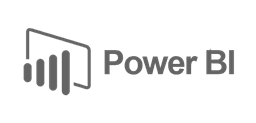German Language Understanding Dataset
Data Science and Analytics
Tags and Keywords
Trusted By




"No reviews yet"
Free
About
This dataset provides a collection of German question-answer pairs along with their corresponding context [1]. It is designed to enhance and facilitate natural language processing (NLP) tasks in the German language [1]. The dataset includes two main files,
train.csv and test.csv, each containing numerous entries of various contexts with associated questions and answers in German [1]. The contextual information can range from paragraphs to concise sentences, offering a well-rounded representation of different scenarios [1]. It serves as a valuable resource for training machine learning models to improve question-answering systems or other NLP applications specific to the German language [1].Columns
The dataset consists of the following columns [1, 2]:
- id: An identifier for each entry [2].
- context: This column contains the context in which the question is being asked. It can be a paragraph, a sentence, or any other relevant information [1].
- question: The question related to the given context [2].
- answers: This column contains the answer or answers to the given question within the corresponding context [1]. The answers could be single or multiple [1].
- Label Count: Numerical ranges with corresponding counts [2].
Distribution
The dataset is provided in CSV format [1, 3], comprising two main files:
train.csv and test.csv [1]. Both files contain a significant number of question-answer pairs and their respective contexts [1]. While specific total row or record counts are not explicitly stated, the source material indicates substantial amounts of data [1]. For instance, certain label counts range from 36,419.00 to 45,662.00, with varying numbers of entries within those ranges, such as 529, 508, or 29 unique values for specific segments [2].Usage
This dataset is ideal for a variety of applications and use cases, including [1]:
- Building question-answering systems in German.
- Training models for German language understanding and translation tasks.
- Developing information retrieval systems that can process German user queries and return relevant information from provided contexts.
- Enhancing NLP models for accuracy and robustness in German.
- Exploring state-of-the-art methodologies or developing novel approaches for natural language understanding in German [1].
Coverage
The dataset's linguistic scope is specifically the German language [1]. Geographically, it is intended for global use [4]. There are no specific notes on time range or demographic availability within the provided sources.
License
CC0
Who Can Use It
The dataset is intended for [1]:
- Researchers working on advancements in machine learning techniques applied to natural language understanding in German.
- Developers building and refining NLP applications for the German language.
- Enthusiasts exploring and implementing machine learning models for language processing.
Dataset Name Suggestions
- German QA Context Dataset
- German NLP Question-Answer Pairs
- Contextual German Questions & Answers
- German Language Understanding Dataset
Attributes
Original Data Source: German Question-Answer Context Dataset
Loading...
